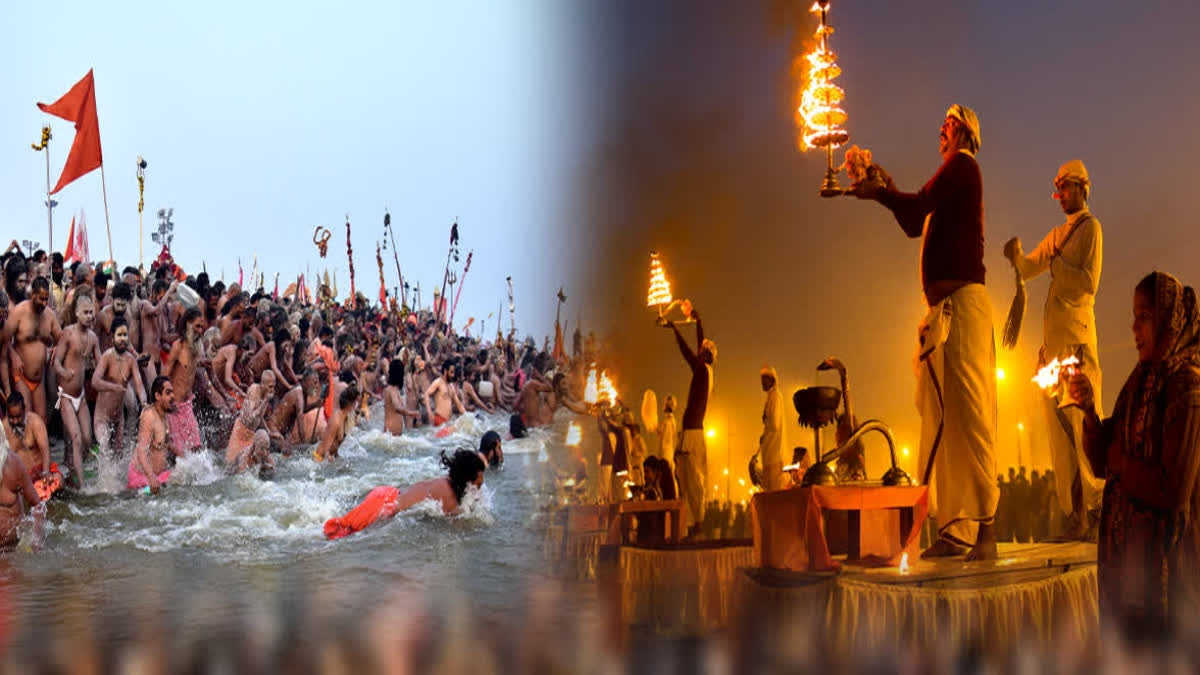Prayagraj:The upcoming Maha Kumbh Mela in Prayagraj, Uttar Pradesh, will commence on January 13 and continue until February 26, 2025. It is estimated that 40 to 45 crore devotees from India and abroad will gather for this grand religious event. The Maha Kumbh is one of the largest religious gatherings in the world, offering not just a spiritual experience but also a sacred bath at the Akharas. Before delving into the events, it's essential to understand the mythological origins and significance of the Kumbh and Maha Kumbh.
The Mythological Story of Kumbh
According to mythology, the story of the Kumbh begins with the war for the nectar (Amrit) that emerged during the churning of the ocean (Sagar Manthan). The Gods and demons fought fiercely for the Amrit. In the struggle, the Amrit spilt from the Kalash (vessel) and fell at four different locations: Haridwar (Uttarakhand), Prayagraj (Uttar Pradesh), Ujjain (Madhya Pradesh) and Nashik (Maharashtra).
The Quest for Amrit
This divine quest for Amrit brings millions of people together. The sacred rivers, particularly the Ganga, offer spiritual purification. Upon submerging in the holy waters, devotees chant the eternal mantras, ‘Har Har Gange’ and ‘Jai Ganga Maiya,’ symbolising unity and oneness. The Kumbh Mela is not just a pilgrimage, but a spiritual journey.
The Amrit Kalash and the Divine Battle
During the Sagar Manthan, the Amrit Kalash was seized by Swarbhanu, a demon, from Dhanvantari, who had initially retrieved it. Swarbhanu took the Kalash and fled towards the sky. In pursuit of him, Indra’s son Jayant transformed into a crow and attempted to retrieve the Kalash. The battle that ensued between the Gods and demons led to the spillage of Amrit from the Kalash at different locations.
- The first drop fell at Haridwar, establishing it as a holy site.
- The second drop fell at Prayagraj, marking it as the supreme pilgrimage site.
- The third drop fell into the Shipra River at Ujjain.
- The fourth drop fell into the Godavari River at Nashik.
